If you’re looking for ideas on how to teach about Jamestown, you’re in the right place!
Jamestown is a story that fascinates adults and children alike.
17th Century Jamestown was a place of adventure, misery, and later… success!
Each year, I look forward to teaching my students all about this turbulent young settlement.
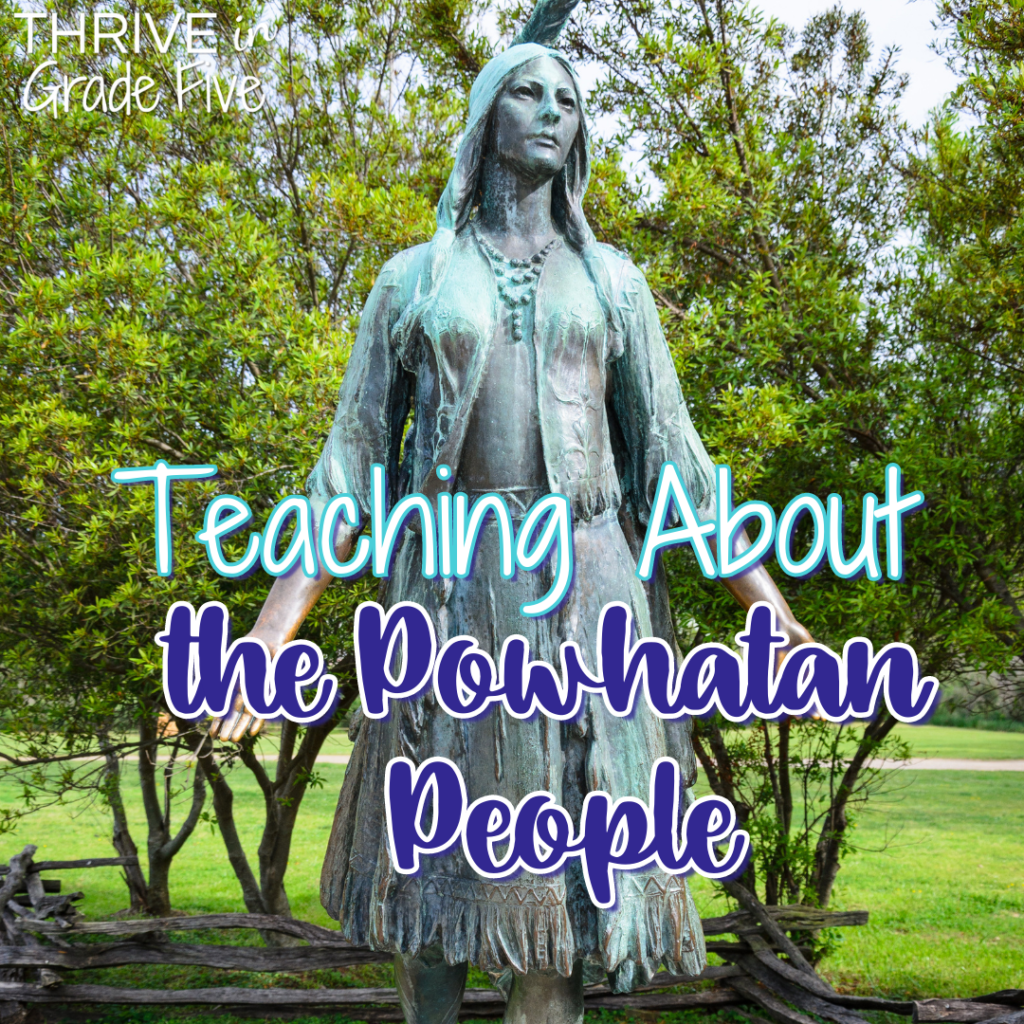
Teaching About the Powhatan People
You can’t dive right into teaching about the Jamestown settlers’ struggles and successes without first discussing the Native Americans that occupied the land for thousands of years before the Jamestown settlers arrived.
There were approximately 14,000 Powhatan People living in and around Virginia when the first group of Jamestown settlers rowed ashore.
The Powhatan were divided into around 30 tribal groups and all pledged loyalty to one leader, who the English called Chief Powhatan. (Pow-uh-tan)
This teacher-produced video is an excellent way to show students around a Powhatan village: Powhatan Village
Powhatan Culture
The Powhatan culture was markedly different from English culture.
Women built homes, processed meat, farmed, gathered plants, cooked, and performed many other duties.
Men hunted, built canoes, fished, and fought, when necessary.
The Powhatan worshipped multiple gods and spirits, a practice foreign to Jamestown settlers.
What About Pocahontas?
Students always ask about Pocahontas.
She was one of the many children of Chief Powhatan and there are many untruths out there about her.
First, she was married to John Rolfe, Virginia tobacco planter, not John Smith.
Second, she was a young girl when the Jamestown settlers arrived in Virginia.
I do enjoy showing clips of the Disney version of Pocahontas after we’ve finished our Jamestown unit.
My students looooove to point out the inaccuracies in the movie! If we have time, I ask students to write a paragraph or two comparing the Disney movie with the truth about Jamestown.
Grab my free Jamestown Anticipation Guide here!
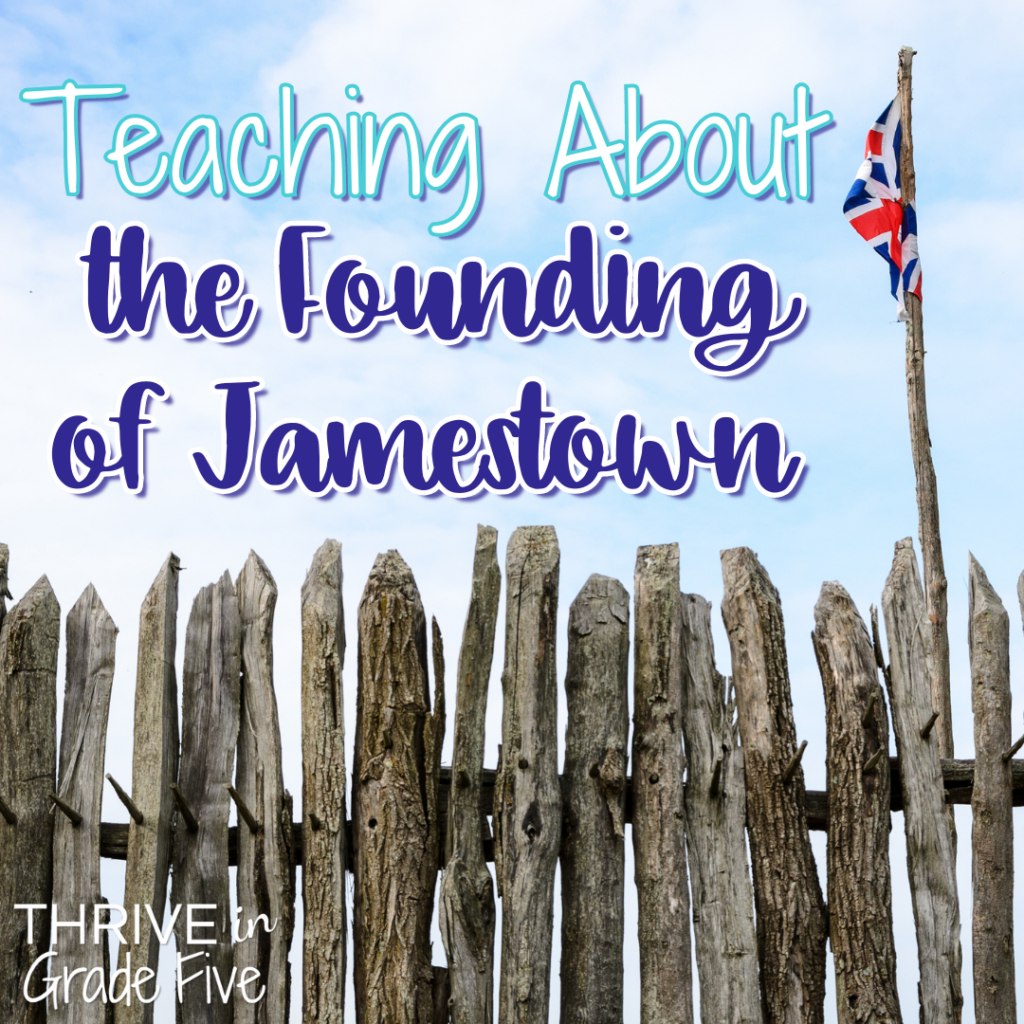
Teaching About the Founding of Jamestown
Once students have a clear understanding of Powhatan culture, we dive into our study of the settlers who came to Jamestown.
Jamestown was sponsored by the Virginia Company, a group of wealthy investors who planned to profit from the natural resources to be gained from a colony in the New World.
There were no women or girls in the first passage to Jamestown. The Virginia Company did not want to send women to Jamestown until the colony was somewhat established. Women began to travel to Jamestown starting in 1608.
💍 Teach your students about Jamestown’s Mail-Order Brides with a video lesson, printables, and primary sources. 💍
King James I of England (Jamestown’s namesake) provided the charter for the new colony because he wanted to expand England’s power.
Additionally, King James I and the Virginia Company established Jamestown with the future hope of finding a Northwest Passage and converting Native Americans to Christianity.
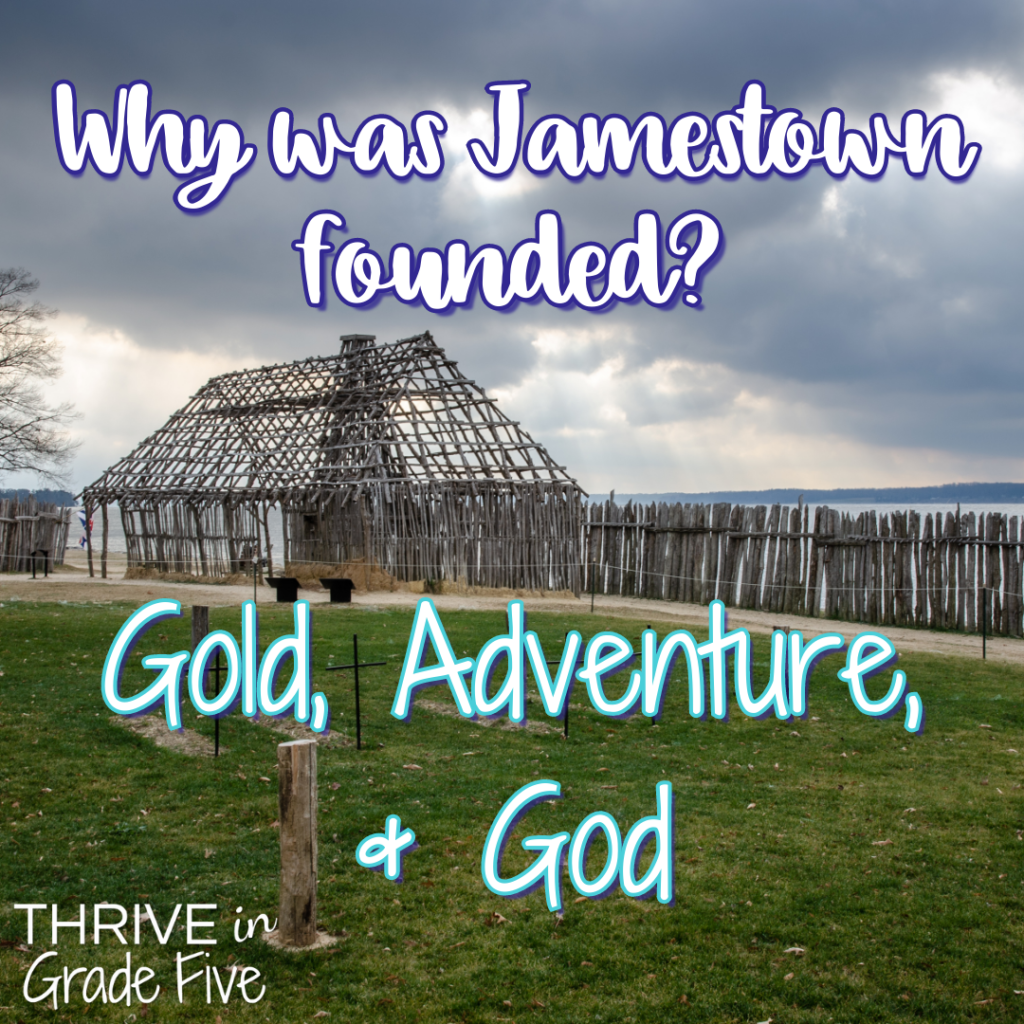
Many colonial settlements were founded for religious reasons, but Jamestown definitely wasn’t. The mission of Jamestown was to make money for the Virginia Company.
The men who came to Jamestown in the first voyage were interested in riches and adventure.
Please visit this primary source listing of the men and boys who first settled Jamestown:
The First Residents of Jamestown, National Park Service
In my classroom, I give one print out of this page to each cooperative group of students. I ask students to highlight and count the number of each type of individual listed on the registry. For example, how many carpenters, laborers, gentlemen, mariners/sailors, and etc?
Students will find that there were significantly more gentlemen (fancy rich men) than laborers. Ask them to discuss what this means.
I pose this question:
What type of settlement would likely contain a large number of gentlemen and few actual workers?
The truth is that the Virginia Company did not practice good judgement when they decided who to send to Jamestown on the first voyage.
The gentlemen wanted to go because they’d heard rumors that there were pieces of gold lying all over the ground for the taking. Who could pass that up?
The problem with the gentlemen was that they didn’t believe in manual labor, like planting crops, building homes, and establishing a settlement. The unfortunate attitude of the gentlemen caused major problems for the Jamestown settlement.
At this point, I start an amazing read-aloud book, Blood on the River: James Town, 1607 by Elisa Carbone.
* Please note that Thrive in Grade Five (Jenifer Bazzit) is a participant in the Amazon Services LLC Associates Program, an affiliate advertising program designed to provide a means for sites to earn advertising fees by advertising and linking to amazon.com. *
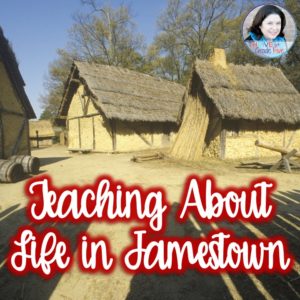
Teaching About Life in Jamestown
As you can imagine, life in 17th Century Jamestown was difficult.
The Jamestown settlers were fully aware that their main purpose for being in the New World was to secure natural resources to send back to England in order to repay the investors of the Virginia Company.
This led to a lot of sawing trees, splitting boards, and very little time building shelter and planting crops.
The Jamestown settlers were able to survive during the first two years because they traded for food with the Powhatan People.
Unfortunately for the Jamestown settlers, their relationship with the Powhatan soured, as you will soon learn.
This 3 minute video clip provides a quick overview of life in Jamestown: Life in Jamestown

How John Smith’s Leadership Helped Jamestown
Despite some major drama on the ship ride over, John Smith became a great asset to the Jamestown colony.
John Smith was a skilled negotiator and was able to secure food from the Powhatan People to help the struggling colony.
He established and nurtured a relationship with Chief Powhatan, ensuring that the colonists were able to trade (and coexist) with their Native American neighbors.
In 1608, the young colony was definitely struggling. When Smith became president of the colony’s council, he instituted new policies to uphold his rule, He that will not work shall not eat.
Smith ordered an expansion of the fort, the repair of buildings, a new well, and insisted that colonists create and tend farms.
It is probable that Smith made some enemies among the other colonists due to his strong leadership. He was badly injured in a gunpowder incident, either accidentally or intentionally, and returned to England in 1609 for treatment.
Without John Smith’s leadership, the relationship between the colonists and the Powhatan deteriorated. This poor relationship led, in part, to the terrible winter of the Starving Time.
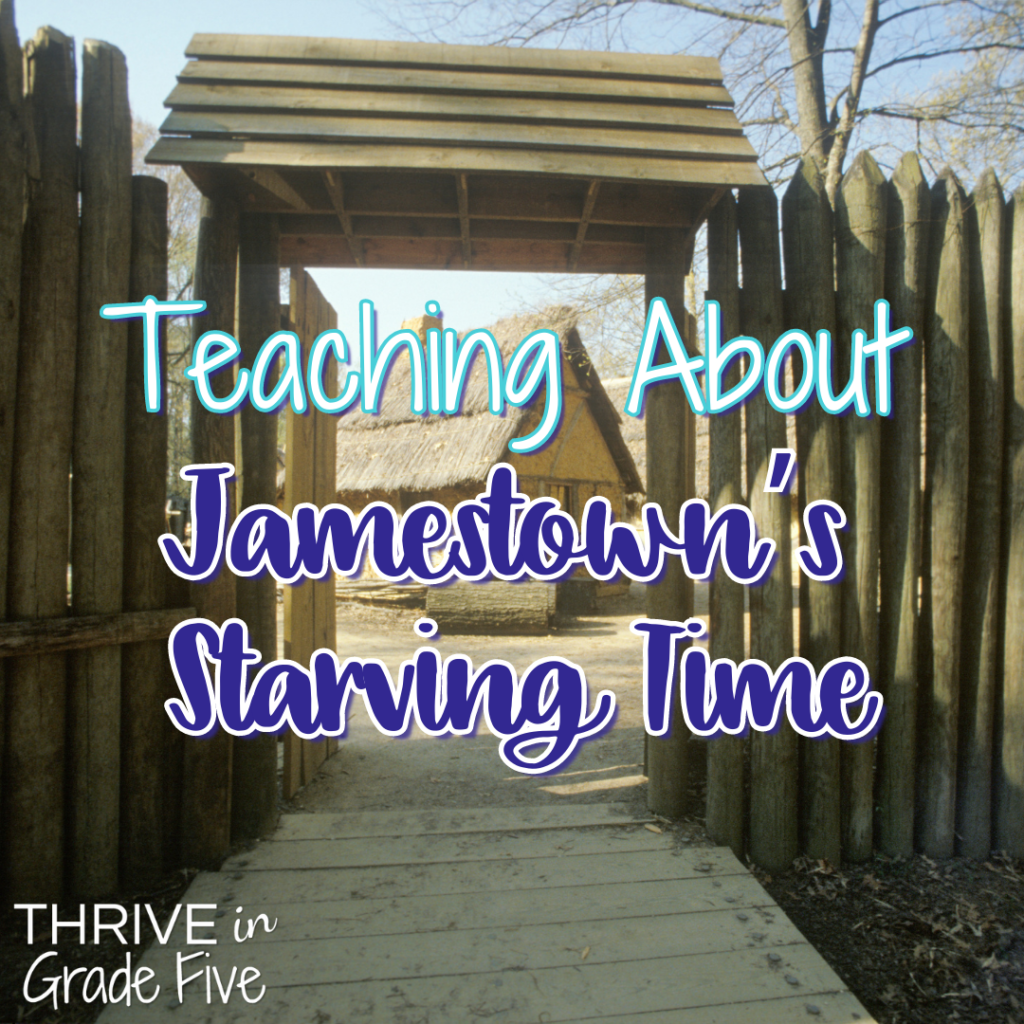
Teaching About Jamestown’s Starving Time
Honestly, teaching about the Starving Time makes me a little queasy. The thought of eating leather, horses, and rats does not sit well with me.
Nonetheless, it’s important to teach this terrible period experienced by England’s first permanent colony.
Many people think the Starving Time was caused solely by the harsh winter of 1609-1610.
There were actually multiple factors that combined to create a hopeless winter for the Jamestown settlers during which most of the settlers perished.
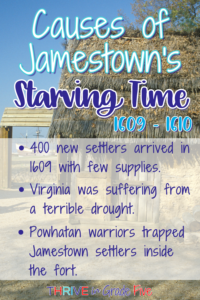
The settlers’ relationship with the Powhatan People had suffered greatly due to the refusal of Jamestown settlers to stay off Powhatan land AND because colonists were caught stealing food from Powhatan storehouses.
Some historians believe that the Powhatan surrounding Jamestown and watching closely for any colonists to leave indicates that they were trying to starve the people inside and bring about the end of Jamestown.
The Powhatan plan was nearly successful. The men and women left inside the fort resorted to eating things we would never dream of consuming, like snakes, rats, boiled leather, and even human flesh.
When discussing the icky foods that colonists ate to survive during the Starving Time, students usually say, “Ewwww, I would NEVER eat that in a million years!”
This leads to a great discussion about hunger, starvation, and the human will to survive. People who are really, truly starving to death will eat just about anything to survive.
George Percy’s Starving Time Quote
I use a quote from George Percy’s journal with my students. George Percy was a gentleman in Jamestown and briefly served as leader. Thanks to his detailed journals, we know a great deal about what happened at Jamestown.
Now all of us at James Town, beginning to feel that sharp prick of hunger, which no man [can] truly describe but he which hath tasted the bitterness thereof. A world of miseries ensued … [and] some, to satisfy their hunger, have robbed the store, for the which I caused them to be executed. Then having fed upon horses and other beasts as long as they lasted, we were glad to make shift with vermin, as dogs, cats, rats, and mice. All was fish that came to net to satisfy cruel hunger, as to eat boots, shoes, or any other leather some could come by. And those being spent and devoured, some were enforced to search the woods and to feed upon serpents and snakes and to dig the earth for wild and unknown roots, where many of our men were cut off and slain by the [Native Americans]. And now famine beginning to look ghastly and pale in every face that nothing was spared to maintain life and to do those things which seem incredible…
We read through this text one line at a time. Students discuss the meaning of each line. This is an excellent primary source quote to use because it’s clear and understandable for students.
After discussing the Starving Time, I introduce students to Jane. Before Jane, some historians did not believe that the Jamestown colonists actually resorted to cannibalism. The discovery of Jane’s skull proves otherwise.
I show this USA Today article on my projection screen and we read it together:
Additionally, I show students this short video so they can see the facial reconstruction process and the final rendition of Jane.
The Starving Time ended in the Spring of 1610. Desperate settlers planned to sail back to England, but were stopped by a supply ship that arrived in time to help the settlement recover and rebuild.
Need a printable Jamestown Teacher’s Guide? This free teacher’s guide provides background knowledge, pacing/sequence, and resource suggestions.
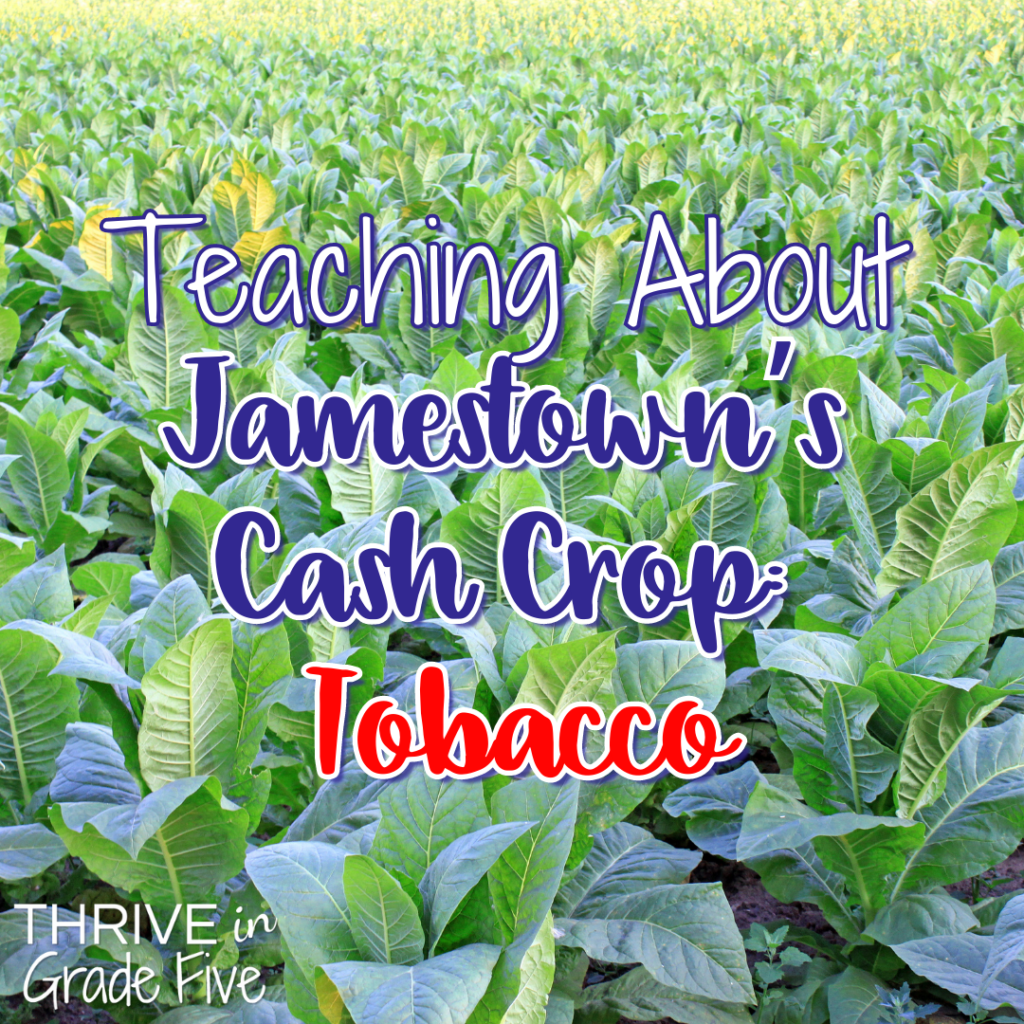
Teaching About Jamestown’s Cash Crop, Tobacco
Did you know that Jamestown later became a profitable settlement?
John Rolfe thought Virginia soil would be excellent for growing tobacco. He brought tobacco seeds from the Caribbean Islands because he wanted to mimic the mild, sweet tobacco that came from that part of the world.
Virginia tobacco was soon in high demand in England and made Jamestown a wealthy settlement!
The unfortunate truth is that tobacco used up the soil quickly, which led to an increased demand for land.
Also, tobacco requires monumental effort and labor to grow, so the demand for indentured servants and enslaved workers grew quickly.
Click here to view my blog post on Teaching 18th Century slavery.

If you’re interested in a complete, comprehensive Jamestown Unit, please click on the image to the left.
If you’d like to keep this post for later, simply save this image to your teacher Pinterest board!
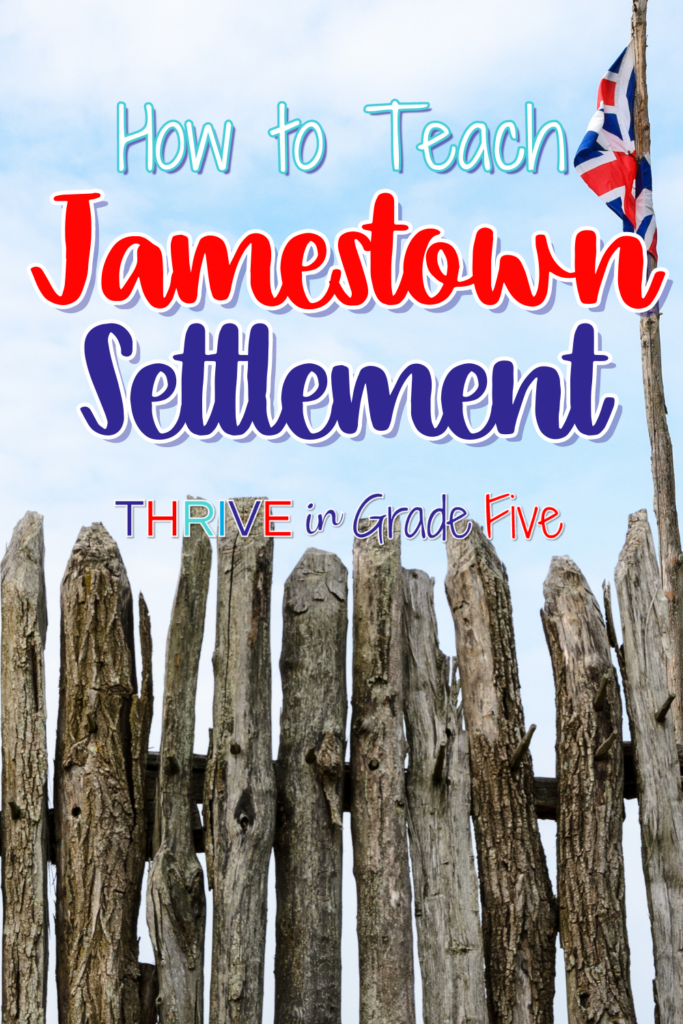

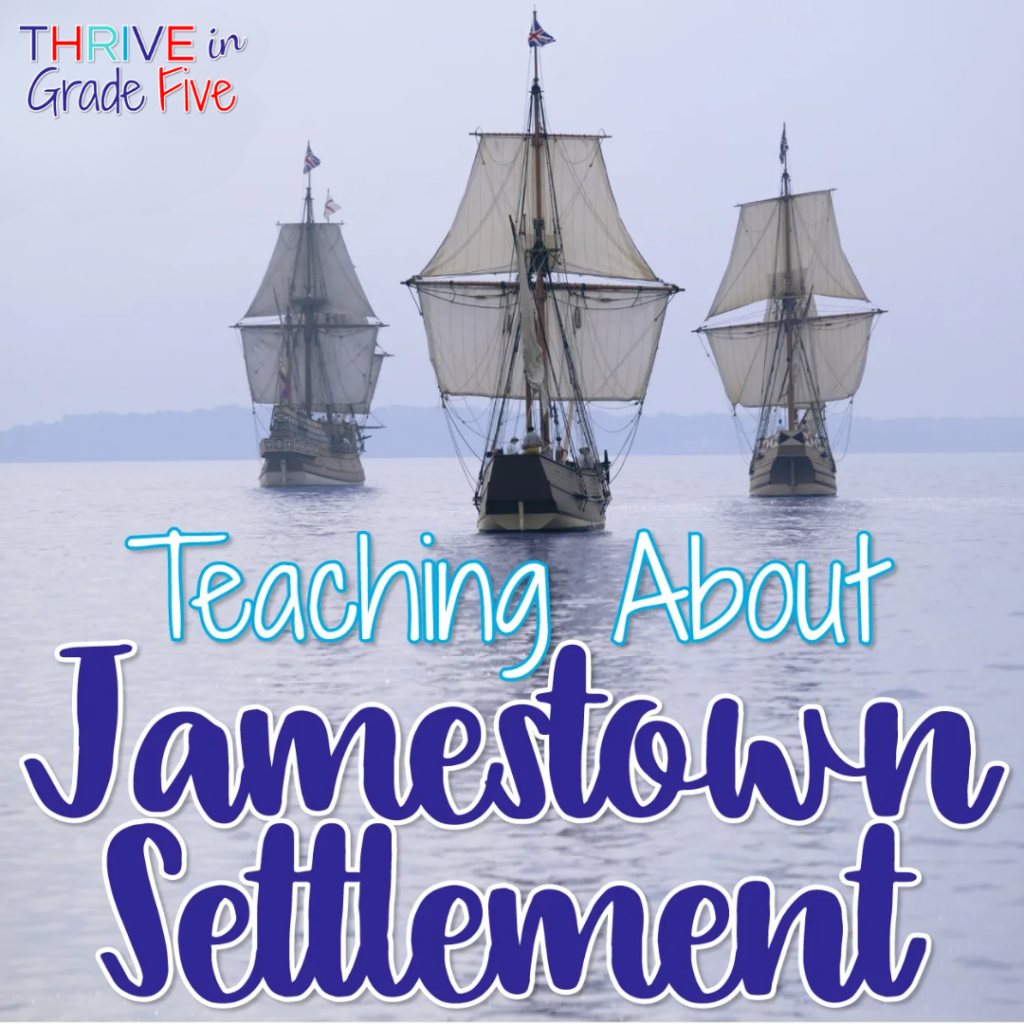

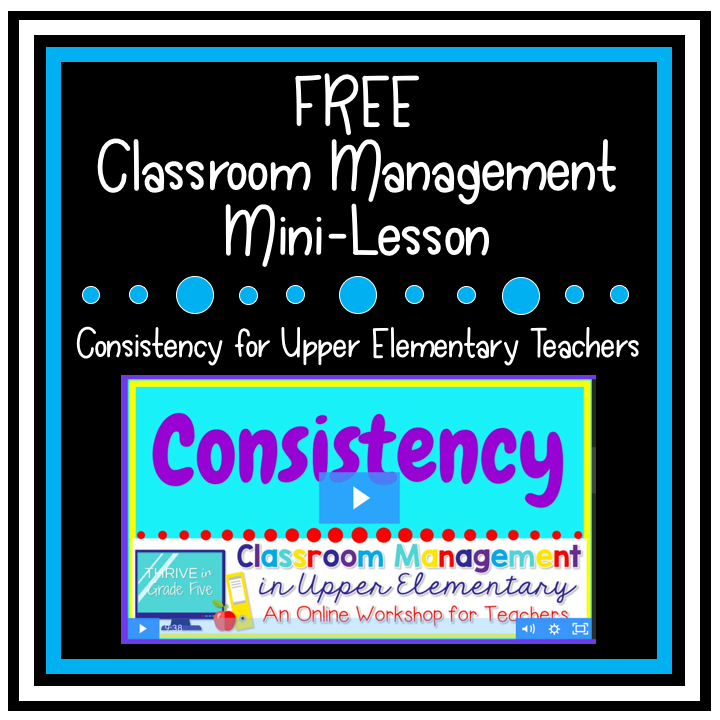
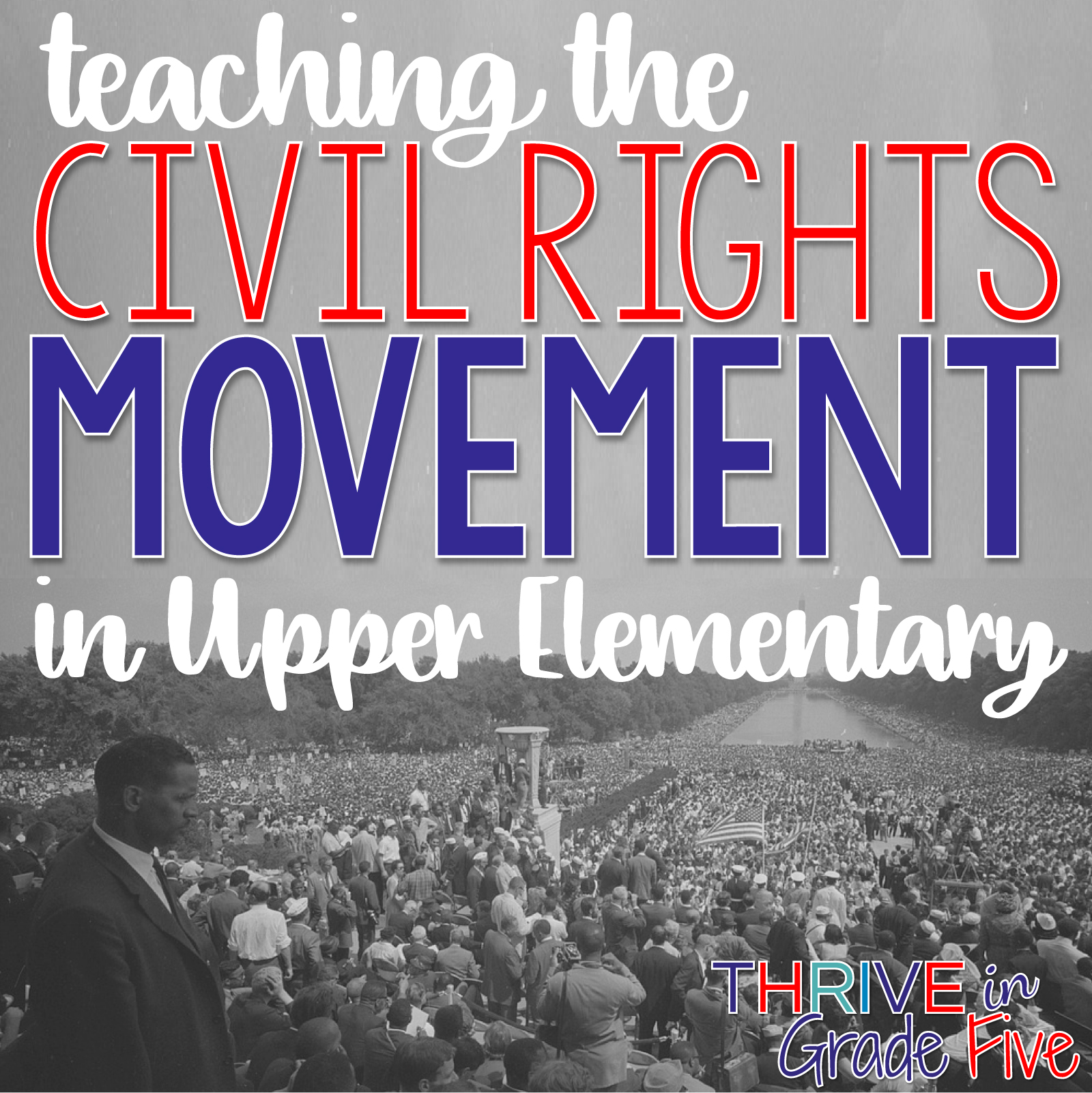

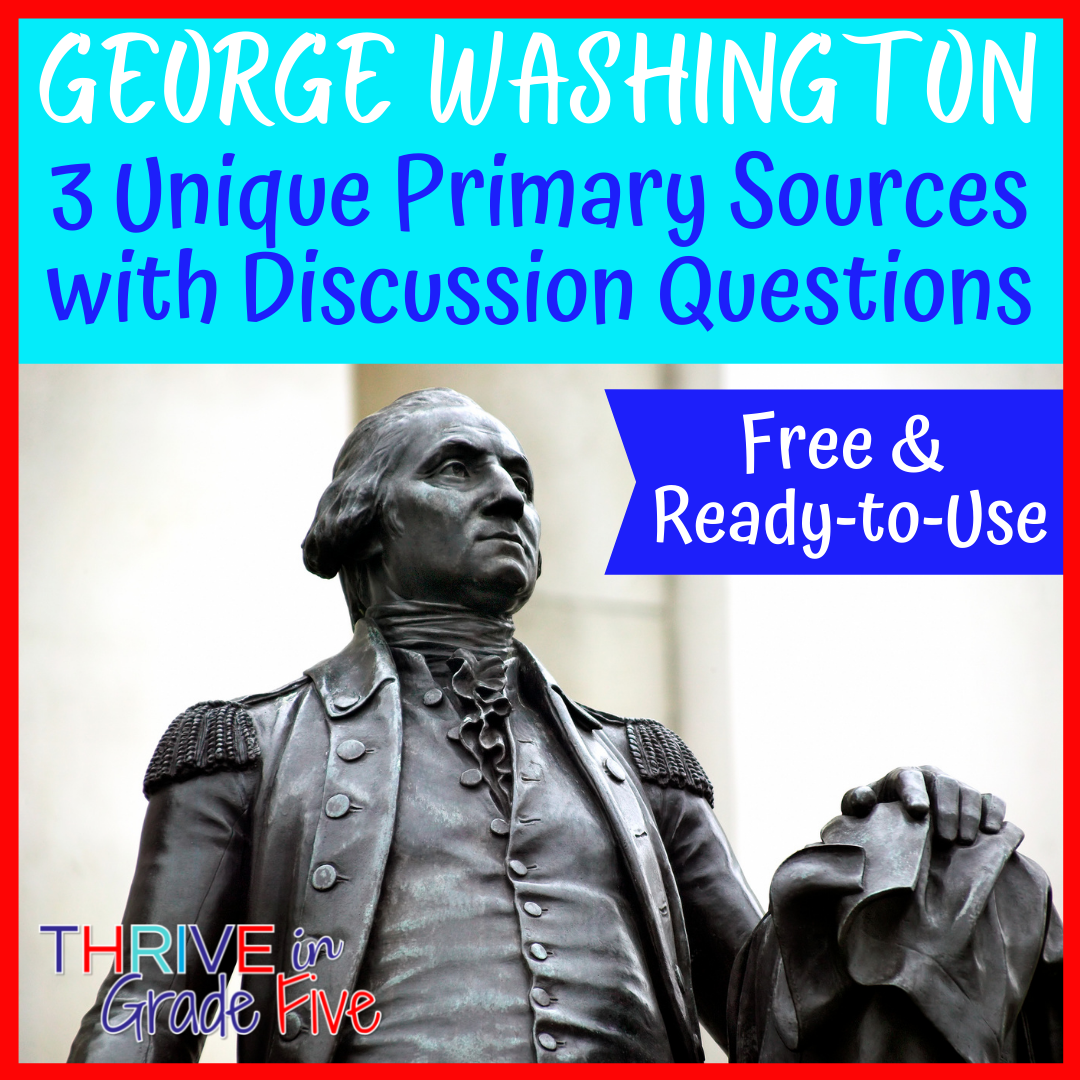
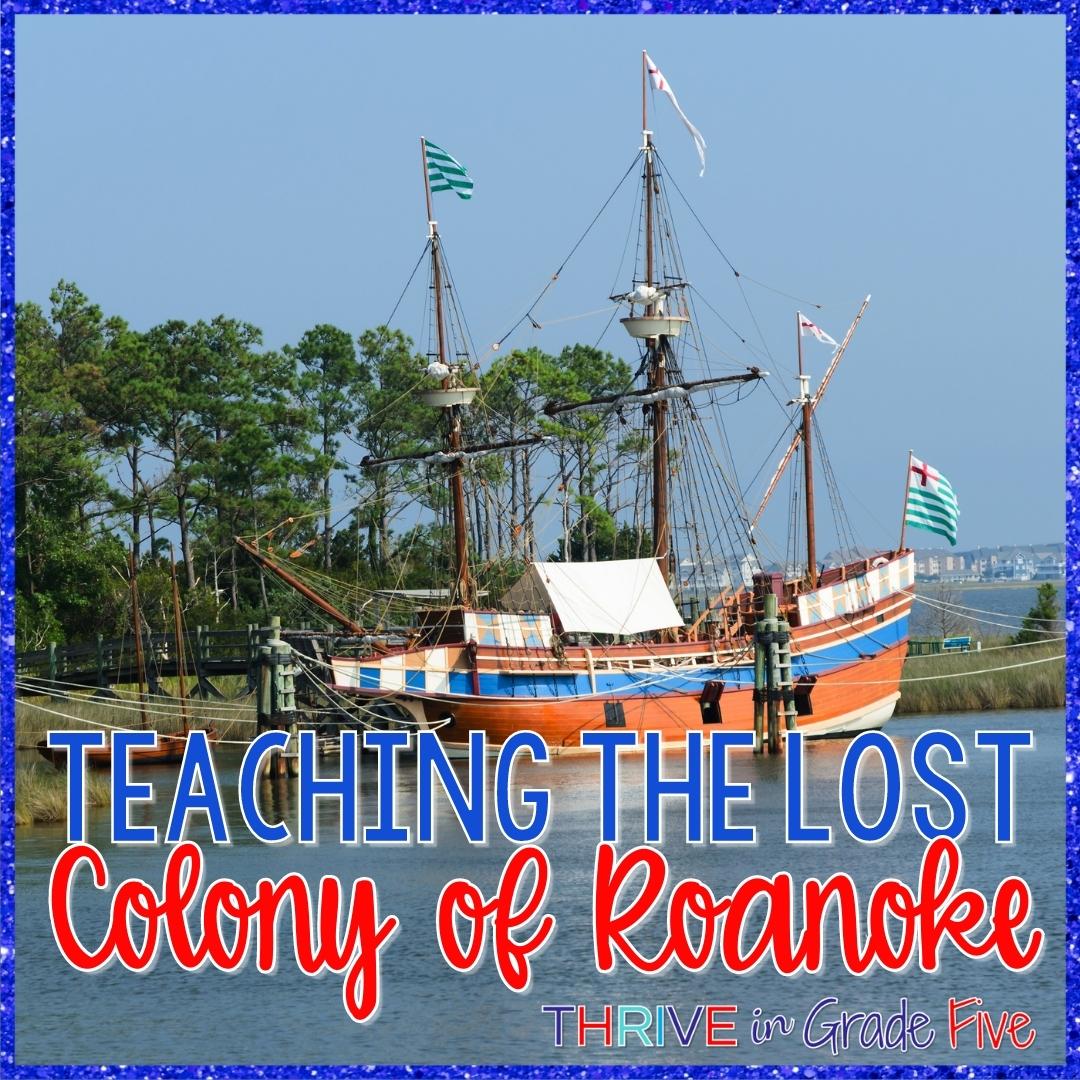
16 Comments
even though summer has just started, yes, I am already thinking about next year – can’t wait to use the Jamestown “stuff” – I normally cover it in 1 day so I know I don’t do it justice. Can’t wait to use this next year!
thanks again
Thank you for taking the time to leave a comment, Diane! I have a short time to cover Jamestown too but I usually spend a week on it at the beginning of the school year and then I circle back toward the end of the year to do some of the fun activities as review.
Hi,
I read your entire blog and all your resources. This is the most excited I have been about resources since I returned to teaching last December. I am moving from 3rd to 5th yay. However, I could not find a timeline for your units of study. Like you said, when I used to teach I was only one chapter ahead of my kids. These units have me so excited about teaching social studies.
Hi Christine! I am thrilled to hear that you’re excited about teaching 5th grade 🙂
I am going to do a blog post soon on how I teach 5th grade social studies but if you’d like a quick timeline before that, please email me at jenifer@thriveingradefive.com and I’ll send it to you!
Thanks for all of this wonderful information! I am excited to start teaching fifth grade this fall. I would LOVE the social studies timeline, too.
Sure thing! I’ll email it to you in just a bit 🙂
I so wished I found your blog last year when I started teaching Virginia Studies!!! This post is great and I can’t wait to read more of your posts! So much information that I can’t wait to use in my classroom! I just started following your Instagram account too!
Thank you, Felicia! I appreciate you taking the time to leave a comment!
I love this! Did you happen to post the social studies timeline in your blog? I just moved from middle school math and science to 5th grade this year and I am struggling with my timing in social studies.
Hi Amber! Thanks for reaching out to me. This post breaks down my year in social studies. There’s also a PDF guide that you can have sent to you for free at the end of the post!
http://thriveingradefive.com/how-i-teach-5th-grade-social-studies/
Hi there! I just wanted to express my thanks for your hard work! I’m not a teacher, just a mom. I’m taking on homeschooling, and your effort and obvious love of history is incredibly valuable to me. Thank you so much! I’m having a great time wandering through your lessons 🙂
Thank you so much, Lindsey! I appreciate you taking the time to leave a comment 🙂
You may already know this but just in case, I have a free Homeschool Parent’s Guide to Teaching Social Studies that can be sent to you immediately.
Here’s the link to grab it: https://pages.convertkit.com/467235e72a/28b5ff6862
Best of luck in your homeschool endeavors!
This is wonderful! I just returned from a trip with 16 of our 5th graders to Washington DC, Mt Vernon, Jamestown, Williamsburg and Yorktown through EF tours. I’m planning for next year and looking for “suggested reading” specific to the early settlements. (I have a list for colonies and colonial life.) Wondering if you have anything besides Blood on the River on your radar, we do that as a read aloud (using audible – its awesome!)
Thanks for your hard work and willingness to share!
What an amazing trip, Laura! That sounds amazing 🙂
I am keeping a note of your email address and I’ll send you new books as I find them.
When do you teach the Native American regions? Do you do this when you are discussing Jamestown?
Hi Rose! I teach the Native American Regions before Roanoke and Jamestown. This is because I teach my students about pre-Columbian cultures.